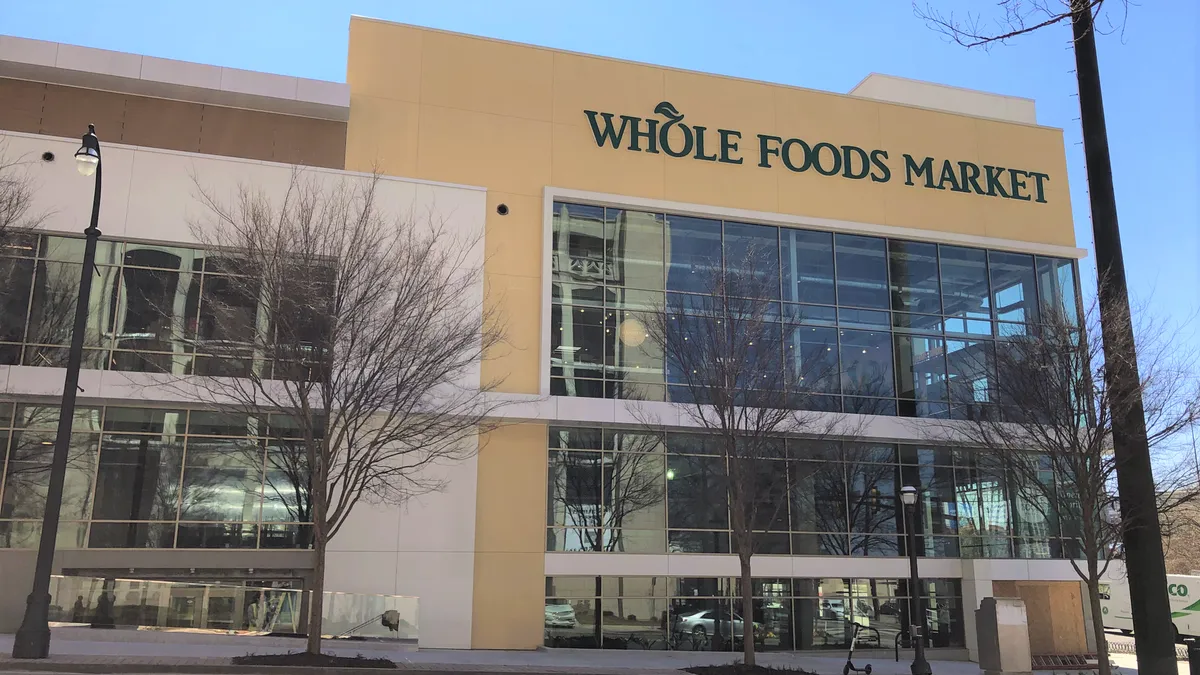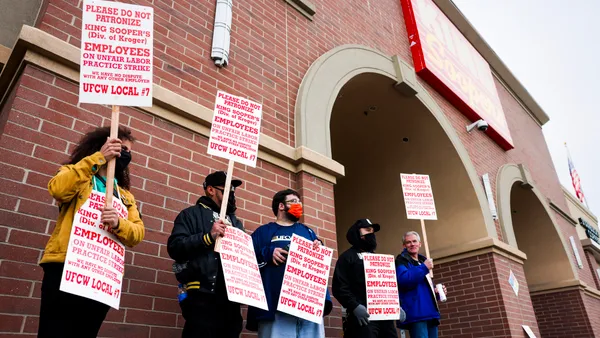Dive Brief:
-
Amazon on Thursday reported a 20% revenue jump in the second quarter to $63.4 billion, as overall net product sales rose 12.5% to $35.9 billion from $31.9 billion in the year-ago quarter. Net income rose to $2.6 billion, from $2.5 billion a year ago, according to a company press release.
-
In North America, sales rose to $38.7 billion from $32.2 billion a year ago, as operating expenses there surged to $37.1 billion from $30.3 billion a year ago. Operating income in the region fell 14.8% to $1.56 billion from $1.83 billion a year ago.
-
Physical store sales — mostly Whole Foods — were flat year over year, reaching $4.3 billion in the quarter. Online store sales rose to $31.1 billion from $27.2 billion a year ago. The company's revenue take from third party seller services rose 23% year over year to $11.9 billion from $9.7 billion a year ago.
Dive Insight:
Amazon on Thursday said that its move to speed up Prime delivery to one day is costing a bit more than the $800 million they'd predicted last quarter.
"That number's probably going to come out north of a billion dollars," Jon Reily, executive vice president of retail and e-commerce at Publicis Sapient, told Retail Dive in an interview, noting that not only did revenues rise 20%, but profit also rose significantly, even if it missed expectations.
The e-commerce giant is still expanding the assortment that's ready to be shipped so quickly, at home and abroad, according to Amazon CFO Brian Olsavsky. But the investment is paying off, he told analysts on a call. "We are really pleased with the customer response," he said, adding that one-day volume accelerated throughout the quarter, especially in North America. "We're in the middle of a journey here."
Olsavsky's contention that one-day shipping spiked sales is backed up by outside firms, including GlobalData. "Our data show that this has been popular, and Amazon has picked up some new Prime members as a result and has captured greater share of those shoppers seeking convenience or needing a product urgently," GlobalData Retail Managing Director Neil Saunders said in emailed comments. "In our view, neither of these constituencies is temporary so Amazon has effectively succeeded in boosting its long-term share of the market."
Olsavsky acknowledged that the outlay to speed up its fulfillment "does create a shock to the system," and said the company expects "to be working through it through the next few quarters."
"But when the dust settles, we will regain our cost efficiency over time," he said.
Olsavsky also made it clear that the speedier delivery is meant to compete with the brick-and-mortar advantage held by rivals. "It strengthens your purchase decision, it strengthens your need not to go elsewhere," he said. "That's what we're seeing in North America."
And that is indeed putting pressure on rivals, particularly Walmart.
"Walmart is on the defensive," Reily said, even more so than Target, though both players have become assertive in e-commerce. "Target still wants to drive people to the store. Ultimately they want you in the store, so it's a different long-term strategy."
Olsavsky didn't have much to say about Whole Foods and its online grocery services other than to say Amazon will continue to invest in them. The company has made some notable investments in grocery private label recently. But continued flat sales at Whole Foods indicate the e-tailer needs to shift its approach.
"Although some progress is being made, we maintain our view that a more radical approach is needed," Saunders said of the specialty grocer. "Physical stores are key to Amazon's future and getting the Whole Foods division on a growth trajectory is a key part of unlocking the potential of the whole group."














